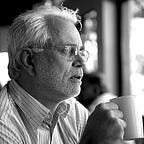Laughing to Death
The Absolutely Horrifying Story Behind Kuru Laughing Sickness
AMERICAN PHYSICIAN AND VIROLOGIST Daniel Carleton Gajdusek listened intently as Vincent Zigas, a district medical officer in the Fore Tribe region of Papua, New Guinea, described a devastatingly fatal illness he had been observing.
Women and children primarily were presenting symptoms that he at first attributed to Creutzfeldt–Jakob disease, which included body tremors, weakness, and slurred speech. But there were additional symptoms that followed, including strange, uncontrolled laughing. And like Creutzfeldt–Jakob, it was always fatal.
Zigas was a native Estonian who after a months-long course at the Australian School of Pacific Administration went to Papua New Guinea in 1950 to serve as the only medical officer in this remote region. Soon after landing in this strange, primitive land, he began hearing rumors of, and then witnessing, that unique illness that the locals called “Kuru” and attributed to sorcery. Stranger still, he discovered the disease was primarily distinctive to the Fore tribe and seemed to chiefly strike women and children. Men were rarely affected.
“This beautiful, but outlandish island, through time immemorial, has had a sinister reputation,” Zigas wrote of the mysterious 350,000-sq-mile island in his posthumously…
